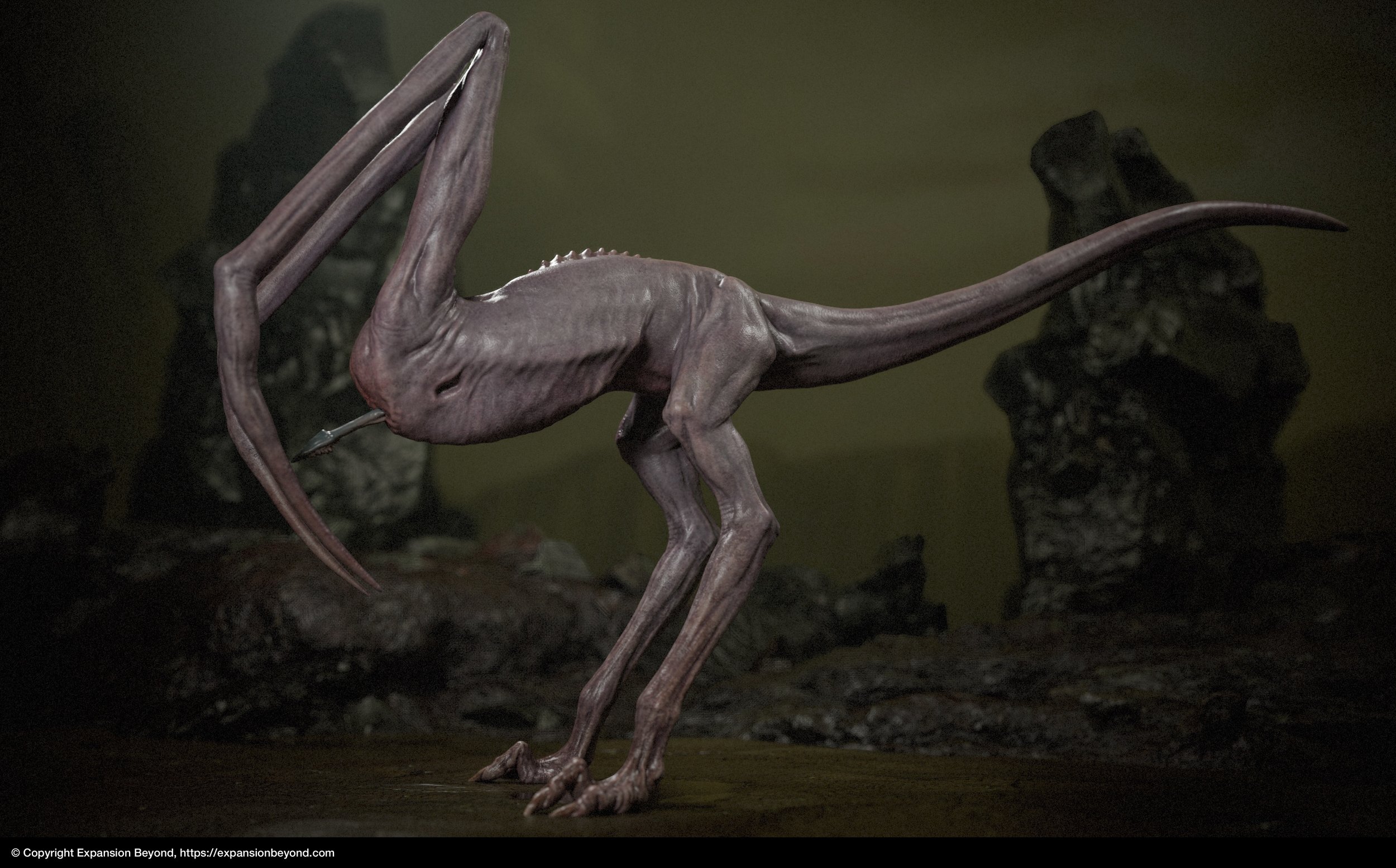Mantis
Known for: being a vicious predator with no survival instincts.
Branches: Tergumostia Crustaformae Bipartitus Firmuscrustae Scalprutora Terrestria Endocrustae Rectumotus
Learn about what these branches mean in the taxonomy page.
Mantises are apex predators found mostly in coastal regions in the Day Hemisphere. They are fast, biped runners with front limbs shaped into perforating claws which they use to catch and kill prey.
Morphology
Mantises are plated invertebrates, which means they have a plate-based endoskeleton and, since they belong to the Tergumostia branch, their mouth is located at the back of their body. Like all other species in the Bipartitus branch, Mantises have three pairs of limbs. Their front limbs evolved into claws which they use to pierce and kill their prey. Their middle limbs are legs which they use to run in a biped position. Their back limbs surround their mouth and help them feed.
Senses
Like other Tergumostia, Mantises have:
A tongue adapted to detect movement. Mantises specifically have an additional area in the center of their tongue used to enhance definition at short range;
A feather, which is a sensitive structure located under their torso used for hearing. Mantis hearing is limited to a narrow range of frequencies, but capable of hearing hushed sounds and detecting their direction;
An inhaler, organ that pulls air into the Mantis’ trachea, which they also use to smell. Mantis inhalers are not capable of accurately differentiating odors, but like sound, they can detect odor direction, which aids them in locating prey.
See the biology page for more details about Tergumostia senses shared by Mantises.
Behavior
Mantises are lone velocity hunters who outrun prey with short bursts of speed and kill it with their claws. They use sound and smell as the primary means to detect prey and their general direction, and their compound vision to detect movement. This means that Mantises have difficulty seeing animals who camouflage (although they can hear and smell them). It’s common to see a Mantis walking around searching for prey hiding nearby because it can smell it, but can’t see it.
After making a kill, Mantises sit over the carcass and eat it by sucking liquids and using pincers that function similarly to teeth, cutting and shredding meat before ingesting it. Their seated position allows them to keep watch on their surroundings while eating and thus avoid incoming danger.
Mantises don’t seem to have evolved much since they first appeared. They are primitive creatures, driven mostly by external stimuli and lacking planning or coordination skills seen on other top predators such as Squid or Grabbers. They also seem to lack survival instincts. It’s common to see a Mantis attack other predators, even when injured or outnumbered. Despite this, they are an extremely successful species positioned at the top of the food chain in their habitats. Their success is most likely due to their resistant and straightforward anatomy - Mantises are essentially killing machines.
Reproduction
Like other Scalprutora, Mantises do not have genders and are viviparous. Mating between Mantises consists of an aggressive confrontation, which usually results in injury and sometimes (but rarely) death. When two Mantises mate, they fight with each other for dominance. The winner climbs on the loser and spreads its semen across its back, fertilizing eggs located inside the loser Mantis’ back pouches. We believe this behaviur evolved as a mechanism that results in the stronger specimens reproducing more frequently. The losing Mantis gives birth to their young and raises them through to independence. During that period, it does not produce new eggs or mate. The winning Mantis, meanwhile, carries on with life and gets more chances to mate and spread its genes.
Mantises follow a strategy of quantity over quality. They produce a large number of offspring (40 to 50 individuals), where only 5 to 10 survive. Young Mantises are born with their legs locked in place, not ready for use; instead, they have eight temporary, exoskeleton-based legs attached to their abdomen which they use to hold on to their parent's skin. From birth, young Mantises remain on the parent’s back to stay safe as they grow. They only leave the parent's back to feed after a successful hunt. Young Mantises who fall typically die. It's common for young Mantises to fight and kill each other over food, including eating one another if they are hungry. As young Mantises grow, their back legs become functional, and their temporary legs gradually weaken until they stop functioning. When this happens, the young Mantis is unable to hold on to its parent anymore and is forced to step into the ground. At this stage, they leave their parent and siblings to hunt small animals independently.






